
By Angelo Randaci, Earth’s Ally Horticulturist
Angelo’s passion for plants has led him to explore many areas of horticulture including research, grounds management, technical training, design and nursery management.
Weed Trouble Zones
Weed trouble zones are areas virtually anywhere and everywhere that weeds spring up. Obvious areas would include cracks in driveways, pavers, and street edges. There are some unusual places to look out for as well, read on for all the details.
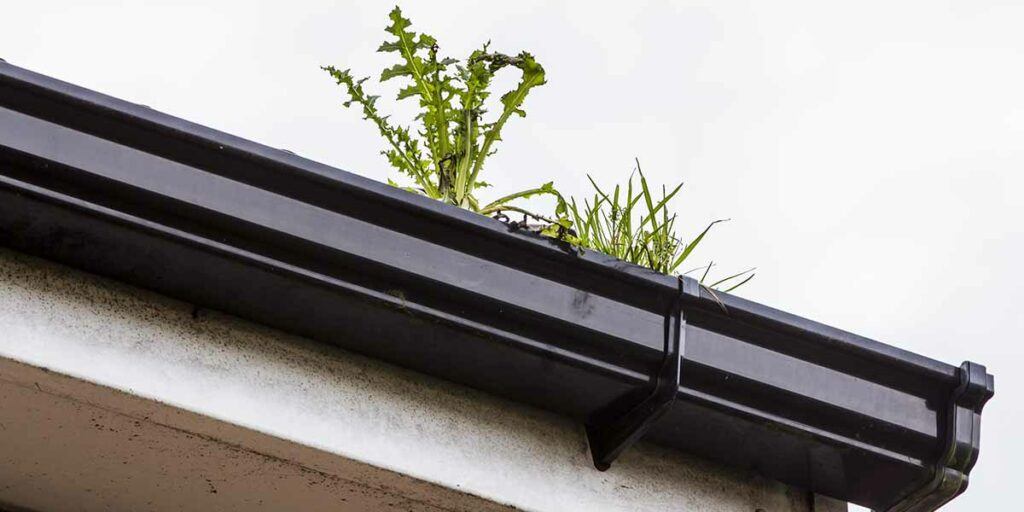
Gutters
When scouting for weed trouble zones, don’t forget to look up. Regardless of how tall your house is, leaves and twigs often find their way into your gutters. As leaves decompose in your gutters, they become partially decomposed. Gardeners call this leaf mold. This leaf mold will provide the perfect conditions for the germination of weed seeds. Not only that, if water flow through your gutters is blocked, it can pool inside the gutters, run over the side and send water to your foundation. Leaf mold will hold up to 500% of its own weight in water. If this water is trapped in your gutters for any length of time, they may even collapse. To remedy this, besides regular cleaning and inspection, you may want to purchase gutter guards. There are many types of gutter guards available that will keep your gutters leaf and weed free. And while you’re at it, be sure to inspect other areas on your roof such as around chimneys, downspouts, and in between roofing shingles, especially if your roof is made of tiles.

Areas Under Overhangs
Areas under overhangs remain dry for lack of natural rainwater, but that will not stop certain weeds. Weeds such as thistles and nettles will find a home there. Overhangs should not be planted unless you want to hand water because rainwater cannot reach these areas. The drip line where water runs off the house is a prime area for weeds to grow and flourish. One solution is to use a weed mat in these difficult areas and cover with stones. Bring the mat and stone line beyond the overhang where water runs off your roof. You can even choose colored stones to match your house. Do not use mulch near your foundation as this can attract termites.
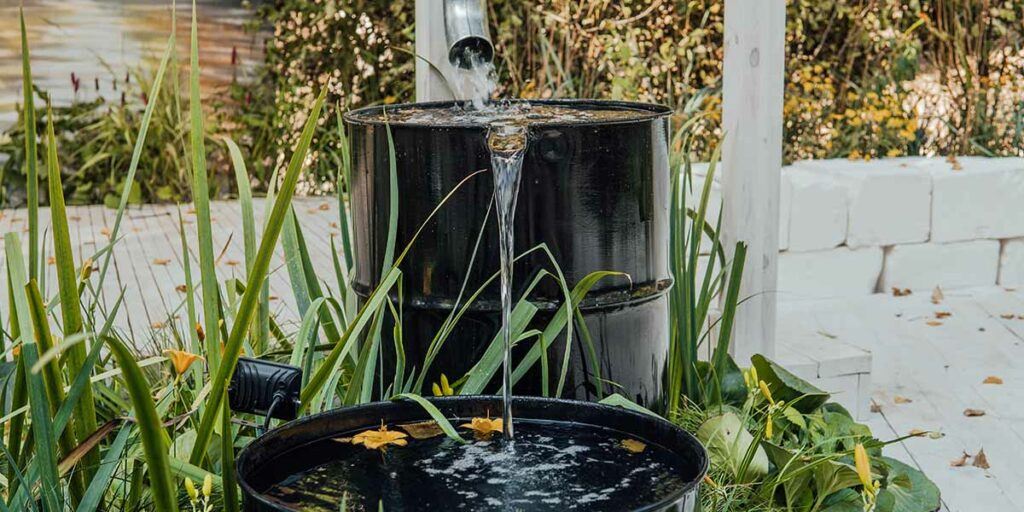
Low Areas in Your Landscape
Low areas will hold water and kill turf or many of our landscape plants. Water loving weeds such as chickweed, crabgrass, ground ivy, sedges and moss can find their way to these wet, unfavorable zones. You can however, get creative with wet spaces by constructing a rain garden. A rain garden is basically a depressed area in the landscape that collects water runoff that is planted with water tolerant plants. Another solution is to put in a dry creek bed. A dry creek bed is an effective drainage solution and a low maintenance landscape feature. You can also change the elevation, add soil, a French drain, or add drainage pipes to the area.

Bare Spots in Your Lawn
Bare spots are caused by foot traffic, poor soil conditions, pet urine, grub infestation, chemical spills, or a variety of other reasons. Bare spots in any open area are prone to weed infestation. If bare spots are in the lawn, disturb the soil lightly with a rake or hand trowel and re-seed. You can also purchase grass plugs to immediately fill in the bare spots. Grow a thick lawn by maintaining water and fertilizer levels and mow your grass high, taking off only about a third of the blade. The taller leaf blades will shade the soil and discourage weed growth. Spot spray with Earth’s Ally Weed Control. This will effectively kill broad leaf weeds in grass. Use a plastic cup with the ends removed to place over the weed to keep spray off the turf.
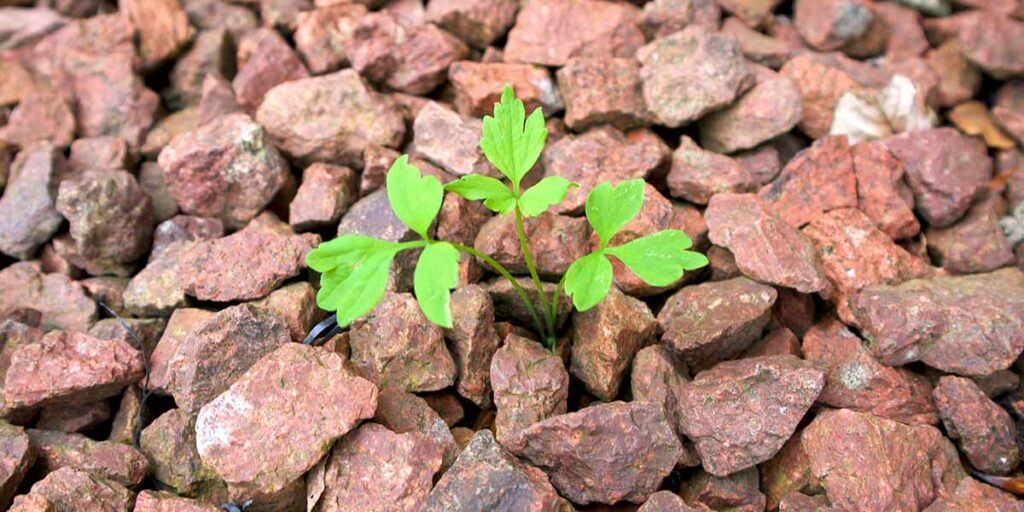
Weeds Growing Through Groundcovers
One of the most challenging weed zone areas is among groundcovers. In a well-established ground cover bed, weeds have a difficult time growing. But weeds, especially in newly planted groundcovers, are a challenge. The key to groundcover planting is in the preparation. Prepare your area carefully by first removing weeds. Add compost or other organic matter. In both established and newly planted beds you will need to hand-pull weeds from the beds until the groundcover is established.
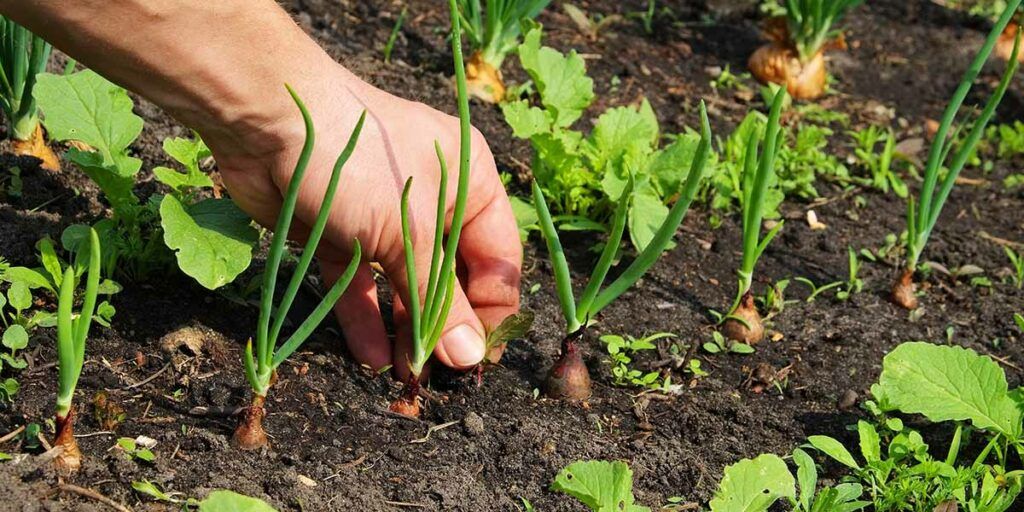
Weeds Growing In and Around Your Garden Plants
Garden weeds often find shelter growing under and in between the stems of plants. Regular inspections are necessary to detect them. Hand pull weeds that are inside the plants, but do not cultivate around your plants as this will encourage more weed seeds in the soil to germinate. Wondering how to keep weeds out of your garden in the first place? Keep a layer of mulch around your plants. Be careful not to put mulch on the plant stems.
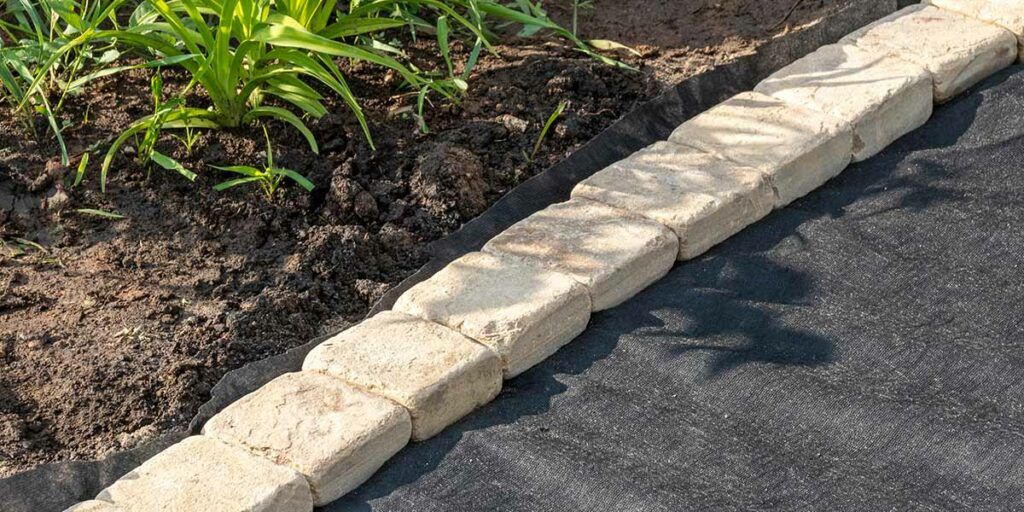
Empty Beds
Cover empty beds left fallow during extended periods or over winter months. Cover with mulch or plastic. Black plastic can be used in the summer when it is hot. The heat will keep weeds from growing and burn out existing weeds.
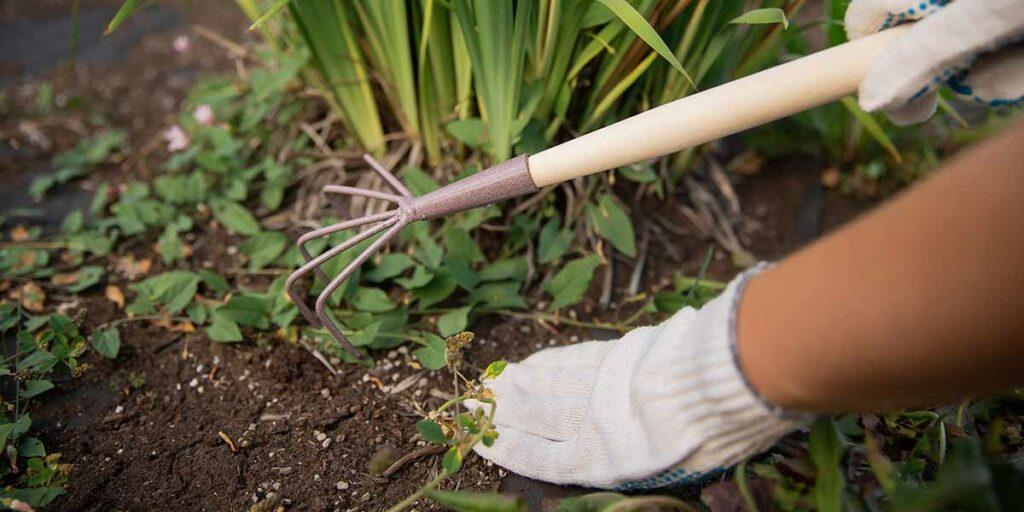
Weeds Growing in Containers
Keep an eye out for weeds coming up through newly planted containers. They can quickly fill in and compete with your plants. Water and fertilize your plants for fastest growth. Add mulch or decorative stones around the plants to discourage weeds and retain moisture.
Habits and Persistence
Practice new habits to save work later on! Stroll through your garden with a good cup of coffee and pull a weed or two. Here are my tips:
- Persistence is the best tip; keep after them.
- Pull weeds after a rain, they will be much easier to pull.
- Pull weeds before they set seeds.
- Keep after obvious areas such as cracks in pavement or weed between pavers.
- Spray any of these trouble zones with Earth’s Ally Weed Control for immediate control.
Earth’s Ally Natural Weed Killer
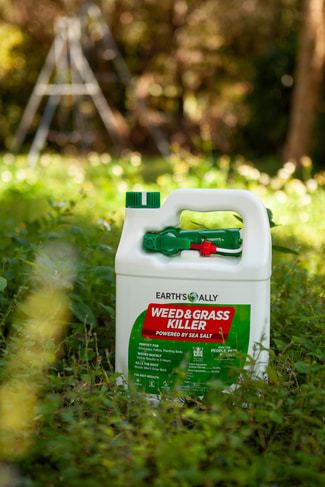
The Earth’s Ally formula is safe for People, Pets & Planet and eliminates common garden weeds, like broadleaf, dandelion, clover, ivy, chickweed and grassy weeds, including crabgrass. Earth’s Ally is a non-selective herbicide with zero pre-emergent properties, meaning it will not prevent the future growth of plants in the soil where it was used. It is a great garden weed killer for this reason.
I recommend incorporating a “Sunshine, Shake & Saturate” mantra when using the Earth’s Ally natural weed killer for optimum success. Sunlight works with the product’s vinegar and sea salt to kill common weeds to the root, with results appearing in about three hours.
We’d love to hear how Earth’s Ally is helping you tame troublesome weeds. Share your experience and stay connected with the #EarthsAlly community on Facebook, Instagram and Twitter for access to our latest blog posts, giveaways and exclusive promotions.
